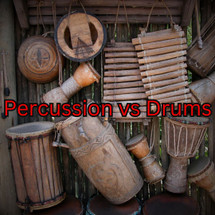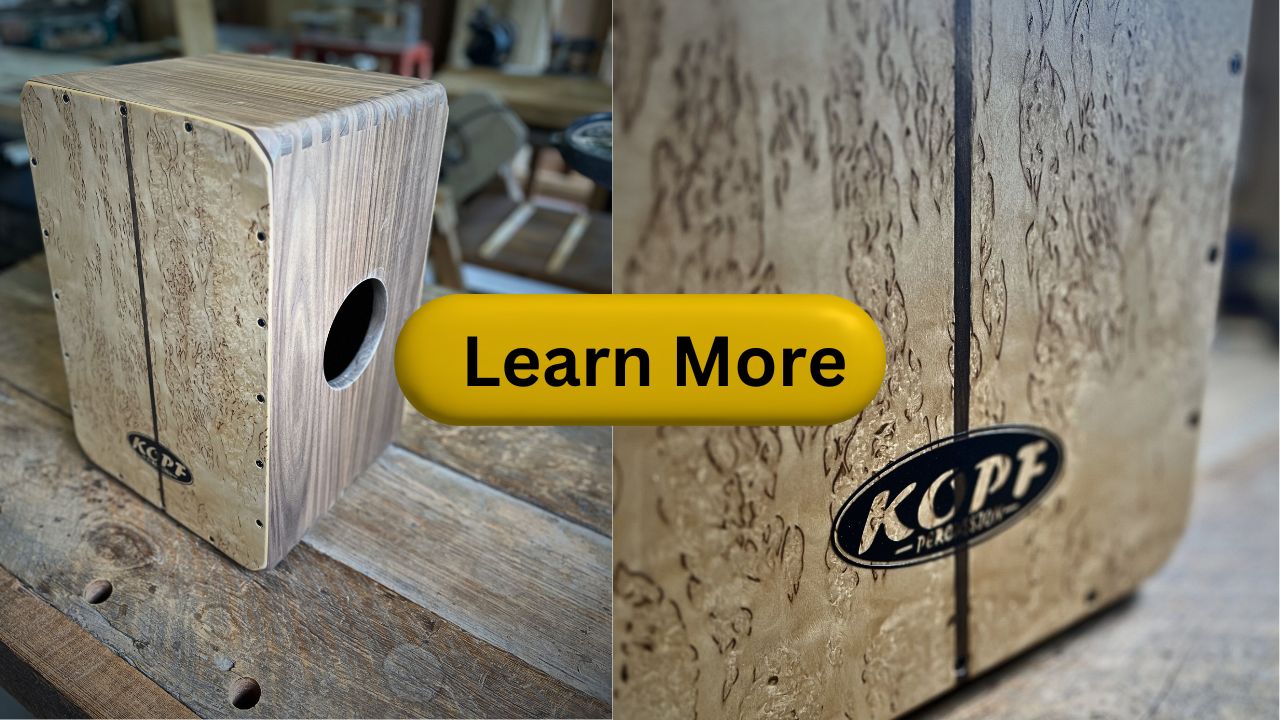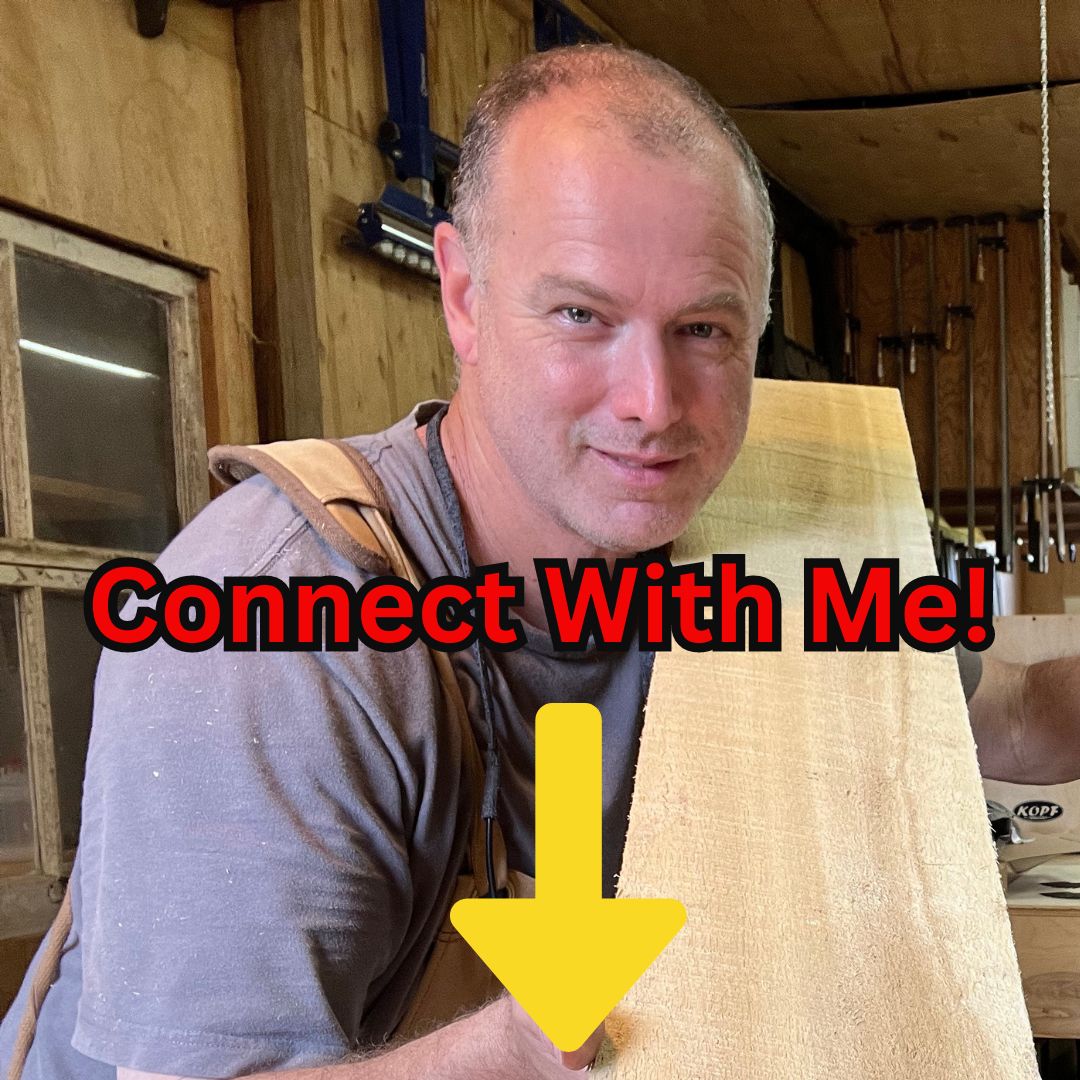Posted by Steve Head on 14th Aug 2024
Understanding the Differences Between Percussion and Drums
When discussing musical instruments, particularly those involved in rhythm and beat-making, the terms "percussion" and "drum" often come up. While they are sometimes used interchangeably in casual conversation, they actually refer to different concepts within the world of music. Understanding these differences is crucial, especially if you’re involved in music-making, whether as a performer, educator, or enthusiast.
At Kopf Percussion, where my main focus is on crafting high-quality cajón drums, it’s important to understand these distinctions to appreciate the role each instrument plays in the broader percussion family. In this blog post, I’ll dive into what sets percussion instruments apart from drums, explore the variety within each category, and discuss why this understanding matters.
What Are Percussion Instruments?
Percussion is one of the most diverse categories of musical instruments, encompassing a wide range of instruments that produce sound through being struck, shaken, or scraped. The term "percussion" itself comes from the Latin word "percussio," which means "to strike." This broad category includes both pitched instruments, which can play different notes (like xylophones, marimbas, and timpani), and unpitched instruments, which produce a single sound (like cymbals, tambourines, and, of course, drums).
The Role of Percussion in Music
Percussion instruments are often considered the backbone of any musical ensemble. They are used to keep rhythm, add texture, and enhance the overall sound of the music. Percussion is unique in that it encompasses a wide variety of playing techniques, from striking with sticks or mallets to shaking, scraping, or even rubbing the instrument.
One of the fascinating aspects of percussion is its universality. Every culture around the world has developed some form of percussion instrument, making it one of the oldest and most fundamental elements of music. From the African djembe to the Latin American congas, to the Asian gongs and the Middle Eastern darbuka, percussion instruments are integral to the musical traditions of every culture.
What Are Drums?
Drums are a specific subset within the larger percussion family. Typically, a drum consists of a hollow cylindrical shell with a drumhead stretched across one or both ends. The drumhead is struck with hands, sticks, or mallets to produce sound. Drums are primarily used to create rhythmic patterns and are central to genres ranging from rock and pop to jazz and classical music.
Types of Drums
Drums come in many shapes and sizes, each with its own distinctive sound and role within an ensemble. Here are a few common types:
- Snare Drum: Known for its sharp, crisp sound, the snare drum has metal wires (snares) stretched across the bottom head. It’s a staple in both orchestral and contemporary music, providing rhythm and accentuating beats.
- Bass Drum: The largest drum in a typical drum kit, the bass drum produces deep, low-frequency sounds. It’s played with a foot pedal in a drum kit setup, and its powerful thump is essential for driving the rhythm in many musical genres.
- Tom-Toms: Toms are medium-sized drums without snares. They produce a deeper, fuller sound than the snare drum and are used for fills and rhythmic patterns in drum kits.
- Cajón: A box-shaped drum originating from Peru, the cajón is unique in that it can be played by sitting on it and striking the front face (tapa) with hands. At Kopf Percussion, I specialize in crafting cajóns, which have become increasingly popular across various music styles for their portability and rich, versatile sound.
- Djembe: A rope-tuned drum from West Africa, the djembe is goblet-shaped and played with bare hands. It produces a wide range of tones, making it a highly versatile instrument in both traditional and modern music.
The Distinction Between Percussion and Drums
So, what’s the key difference between percussion and drums? Simply put, percussion refers to a broad category of instruments that are played by being struck, shaken, or scraped, while drums are a specific type of percussion instrument that typically involve a hollow shell and a drumhead.
- Percussion instruments include a vast array of instruments like maracas, tambourines, xylophones, gongs, and triangles. Some percussion instruments, like the marimba or vibraphone, can even play melodies and harmonies, which sets them apart from drums that are primarily rhythmic.
- Drums are specifically designed to produce rhythmic patterns. While some drums, like the talking drum, can vary in pitch, they generally do not produce the wide range of pitches or melodies that other percussion instruments can.
In practical terms, all drums are percussion instruments, but not all percussion instruments are drums. This distinction is important, especially when arranging or composing music, as each instrument brings its own unique sound and function to the ensemble.
The Role of Percussion and Drums in Different Musical Genres
Understanding the distinction between percussion and drums can also deepen our appreciation of how these instruments are used in various musical contexts.
In Classical Music
In classical music, the percussion section is one of the most diverse sections of the orchestra. It includes drums (like timpani and bass drums) and melodic percussion instruments (like glockenspiels and xylophones), as well as unpitched instruments like cymbals and triangles. Each of these instruments plays a critical role in creating the texture and dynamics of a piece.
In Jazz and Rock
In jazz and rock music, the drum kit is central. It typically includes a bass drum, snare drum, tom-toms, hi-hat, and cymbals. The drum kit provides the rhythmic foundation and drives the energy of the performance. In these genres, other percussion instruments like congas, bongos, and shakers are often added to enhance the rhythm section.
In World Music
World music offers some of the richest examples of percussion use. Instruments like the djembe, tabla, and cajón are central to their respective musical traditions. These instruments often play complex, syncopated rhythms that are integral to the music’s structure. At Kopf Percussion, I’ve been particularly inspired by the cajón’s versatility in various world music genres, leading to its adaptation and inclusion in many contemporary styles.
Why This Matters for Musicians and Enthusiasts
Understanding the difference between percussion and drums is more than just a matter of terminology; it can influence how you approach music, whether you're playing, composing, or simply listening.
For musicians, knowing the strengths and limitations of each instrument helps in selecting the right tool for the job. If you’re looking to create rhythm, you might choose a drum, but if you want to add texture or color to a piece, you might reach for a different percussion instrument.
For music enthusiasts, recognizing the role each instrument plays in an ensemble can deepen your appreciation for the complexity and beauty of the music you’re listening to. The interplay between rhythm and melody, and between different types of percussion, is what gives music its rich, layered sound.
Conclusion
At Kopf Percussion, where my focus is on crafting high-quality cajóns, I’ve come to appreciate the nuanced differences between percussion instruments and drums. Both have their unique place in the world of music, contributing to rhythm, texture, and the overall sound of a piece.
Whether you’re a seasoned musician or just starting to explore the world of percussion, understanding these differences can enhance your musical journey. And if you’re ever curious about how different percussion instruments can fit into your setup, or if you’re considering adding a cajón to your collection, I’m always here to help with advice and recommendations.
Music is a universal language, and percussion instruments—drums included—are some of its most powerful voices. Embrace the rhythm, explore the possibilities, and let the music guide you!
As an Amazon Associate, I earn from qualifying purchases. This means that if you click on the link and make a purchase, I may receive a small commission at no extra cost to you. This helps support my work in providing quality content. Thank you for your support!




